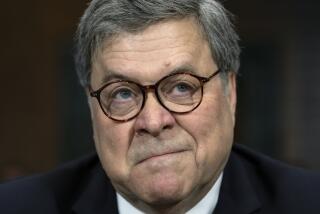Taliban drug proceeds lower than thought, U.S. report says
WASHINGTON â The CIA and the Defense Intelligence Agency have concluded that the amount of drug money flowing to the Taliban in Afghanistan is far lower than widely estimated but remains critical to the insurgentsâ ability to survive, according to a Senate report released Tuesday.
The two spy agencies believe that Taliban leaders receive about $70 million a year from Afghanistanâs lucrative poppy crop -- far lower than the $400-million estimate released last year by the United Nations Office on Drugs and Crime.
Al Qaedaâs dependence on drug money is even less, according to the report by the staff of the Senate Foreign Relations Committee, which found that âthere is no evidence that any significant amount of the drug proceeds go to Al Qaeda.â
The lower estimates suggest that other avenues of funding -- including money from wealthy donors in Arab states in the Persian Gulf region -- remain important sources of support for insurgent and terrorist networks straddling the border between Afghanistan and Pakistan.
Nevertheless, the report notes that âthe insurgency is a relatively cheap war for the Taliban to fight,â meaning that the militants do not need significantly larger subsidies from drug trafficking to finance their operations.
The report comes as the United States is revamping its approach to combating the lucrative narcotics trade in Afghanistan, whose poppy fields account for more than 90% of the worldâs heroin.
After focusing mainly on crop eradication during the Bush administration, the U.S. is shifting to targeting drug kingpins and the criminal networks that control narcotics activities in Afghanistan, from harvesting to processing to export.
In one of its most disconcerting conclusions, the Senate report says the United States inadvertently contributed to the resurgent drug trade after the Sept. 11 attacks by backing warlords who derived income from the flow of illegal drugs. The CIA and U.S. Special Forces put such warlords on their payroll during the drive to overthrow the Taliban regime in late 2001.
âThese warlords later traded on their stature as U.S. allies to take senior positions in the new Afghan government, laying the groundwork for the corrupt nexus between drugs and authority that pervades the power structure today,â the report says.
Afghan President Hamid Karzaiâs government has been stained by allegations of corruption and connections to drug trafficking. Still, Karzai is widely expected to be reelected next week.
To combat corruption and improve intelligence gathering on opium networks, the United States has assembled a new intelligence cell at Bagram air base that is led by Drug Enforcement Administration operatives.
A senior DEA official quoted in the report said authorities in Kabul, the Afghan capital, recently began employing new electronic eavesdropping equipment to monitor the cellphone communications of drug kingpins and government officials suspected of corruption.
By midsummer, 100 Afghan nationals fluent in the regionâs languages and dialects were engaged in the eavesdropping effort, but the program has been hampered by equipment difficulties and lack of electricity in major cities including Herat, Kandahar and Jalalabad.
For the first time, the U.S. military is also pursuing drug traffickers who help the Taliban. âSome 50 of them are now officially on the target list to be killed or captured,â the report says.
The United Nations Office on Drugs and Crime is expected to revise its estimate of the drug money flowing to the Taliban, reducing the figure to about $125 million this year. U.N. analysts told Senate aides they had miscalculated the scope of the problem beyond Kandahar and Helmand provinces, where the Taliban is particularly strong.
Taliban fighters are typically paid $10 a day, according to the report, âand $125 million a year buys a lot of rifles, explosives and rocket-propelled grenades and pays a lot of foot soldiers.â
--
More to Read
Sign up for Essential California
The most important California stories and recommendations in your inbox every morning.
You may occasionally receive promotional content from the Los Angeles Times.










